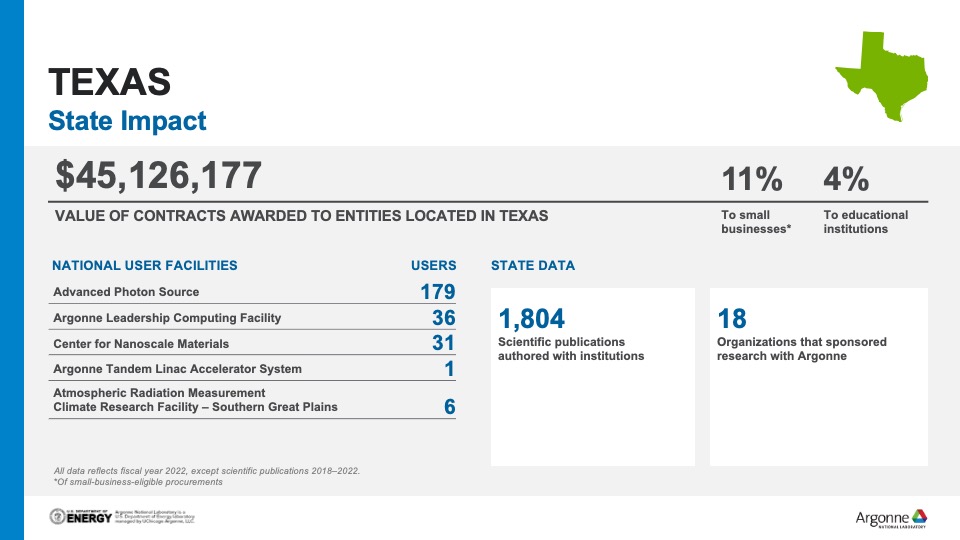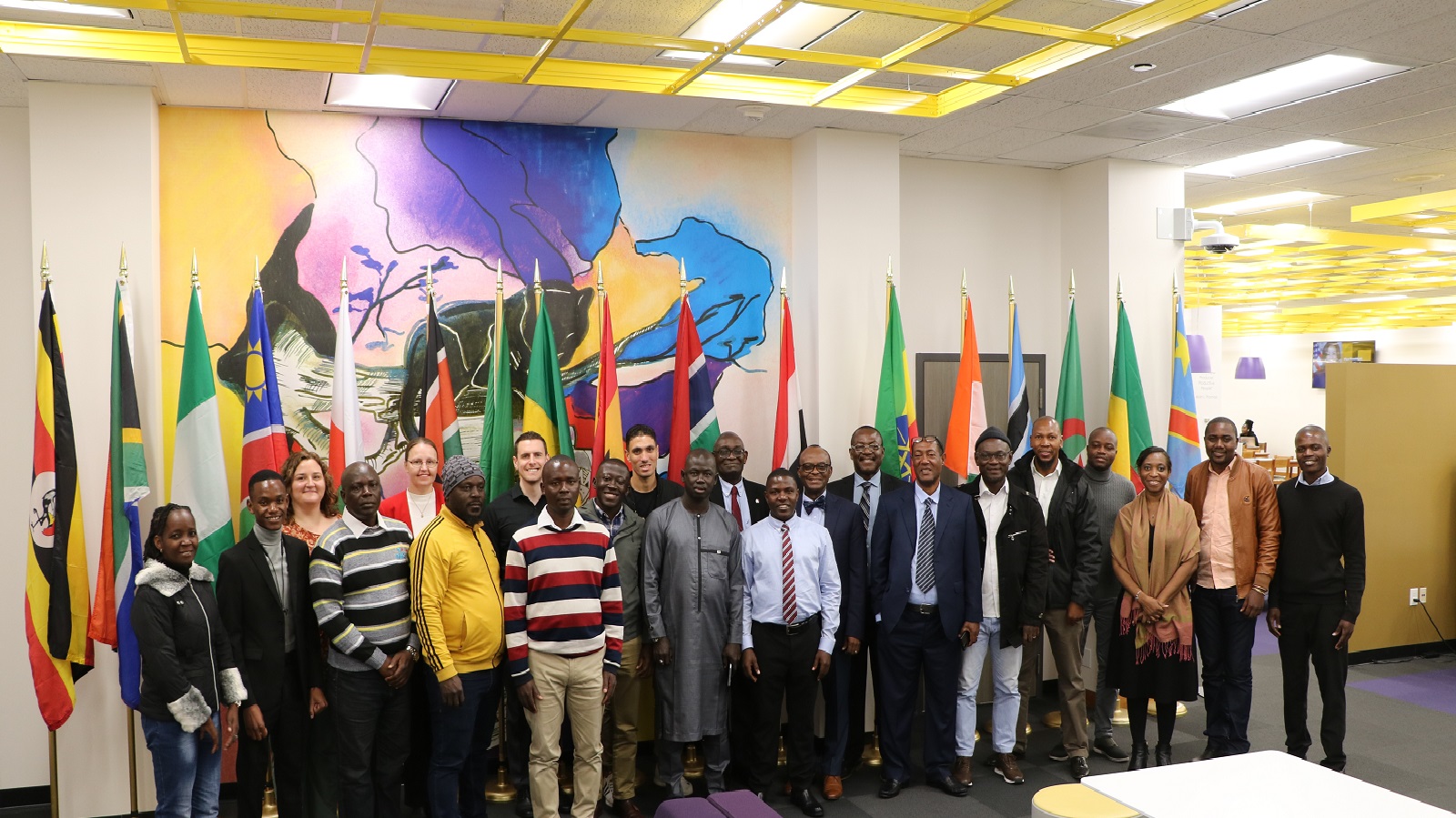Argonne, International Atomic Energy Agency conduct workshop at Prairie View A&M University
The International Atomic Energy Association and its U.S. partners are dedicated to improving nuclear science and technology (NST) education, including an October 2023 workshop for secondary school educators from across the continent of Africa, held at Prairie View A&M University (PVAMU) in Texas, a Land-Grant Historically Black College and University (HCBU). Principal Deputy Assistant Secretary of the Bureau of International Security and Non-Proliferation, Ann Ganzer, provided opening remarks. While the U.S. Department of Energy’s (DOE) Argonne National Laboratory has been involved with IAEA efforts to expand NST education at the secondary school level since 2018, this was the first course focused on Africa.
This year, in an exciting new development, the course was taught at PVAMU, strengthening partnerships between the lab and the community. Godlove Fonjweng, the Executive Director for International & Intercultural Programs and Sunaree Hamilton, Office Director for IAEA Programs at Argonne, in connection with the U.S. Department of State, made the arrangements to set up this year’s workshop just outside of Houston. PVAMU’s location provided a number of fantastic opportunities for students, from tours of nearby nuclear reactors, to medical facilities that use radiation for treatment.
Argonne, Hewlett Packard Enterprise prepare for exascale computing with Polaris supercomputer
The DOE’s Argonne National Laboratory and Houston-based Hewlett Packard Enterprise (HPE) announced plans for a new leading-edge “testbed” supercomputer called Polaris. Polaris will allow researchers to test codes and applications intended for projects using the upcoming exascale supercomputer Aurora, to be built by Intel Corporation and HPE. Polaris, built by HPE, will be hosted at and managed by the Argonne Leadership Computing Facility, a DOE Office of Science user facility. Polaris boasts performance four times faster than Argonne’s current systems and will allow scientists and developers to prepare for a diverse range of projects planned for Aurora.
Polaris promises to advance investigations into society’s most complex and pressing issues, from understanding viruses to revealing the secrets of the universe. It will also expand Argonne’s ongoing work in such areas as clean energy, climate resilience and manufacturing. Polaris also will be used to help researchers integrate artificial intelligence and high performance computing with experimental facilities, such as the DOE Office of Science’s X-Ray Light Sources.
Argonne helps AT&T safeguard its infrastructure
Dallas, Texas-based AT&T turned to the DOE’s Argonne National Laboratory to use its science at scale capabilities and generate hyperlocalized climate projections to help it better safeguard its infrastructure against extreme weather. It also helped the company to make more informed decisions about future infrastructure after natural disasters cost the telecommunications giant about $847 million from 2016 to 2019, including $626 million in 2017 alone.
The company piloted its work with Argonne in Florida, Georgia, North Carolina and South Carolina, where it was hardest hit with hurricanes, flooding and other extreme weather. Utilizing rare supercomputing resources and cutting-edge modeling techniques, Argonne climate scientists delivered neighborhood-level projections 30 years into the future. AT&T overlaid Argonne’s climate projection maps with maps of AT&T’s infrastructure to identify vulnerabilities and areas that are attractive for future infrastructure. AT&T then made Argonne’s forecasting insights available to universities, municipalities and others for their own climate risk analyses to benefit communities.
Texas researchers use Argonne facilities to target bacterium
Dallas researchers from Howard Hughes Medical Institute at the University of Texas Southwestern Medical Center made a pivotal discovery with a pathogenic bacteria found in shellfish that is used to sense when they are in the human gut, where they release toxins that cause food poisoning.
The researchers used the Advanced Photon Source (APS), a DOE Office of Science user facility at Argonne National Laboratory, to study Vibrio parahaemolyticus, a globally spread bacterium that contaminates shellfish in warm saltwater, a leading cause of acute gastroenteritis. When humans eat raw or undercooked shellfish contaminated with Vibrio parahaemolyticus, the bacteria use bile salts as a signal to release toxins. Until now, the mechanism that those pathogens use had remained unknown. Future experiments will aim to understand how binding of bile salt by this protein complex induces the release of toxins.
Greyhorse, Argonne, collaborate on pivotal technology to reduce hydrocarbons inside wells
Houston-based Greyhorse Engineering and Technology is collaborating with DOE’s Argonne National Laboratory on a pivotal new technology that could improve the recovery of oil and natural gas from shale wells located across the United States. The Argonne-patented technology is a treatment that would be used in conjunction with the industry’s current completion practices. Increasing recovery from each well is analogous to farmers obtaining a greater crop yield from their land. This improves the economics for both the operators and farmers and for the consumers.
The technology is inserted deep inside the well during the completion stage of the well, where it creates a chemical reaction that literally chops up the hydrocarbons. The technology then remains inside the well while converting previously solid materials into liquids that otherwise would have been unavailable. The technology is continuing to be developed for use across America in about three years. The research received funding from the Technology Commercialization Fund, managed by DOE’s Office of Technology Transitions.





